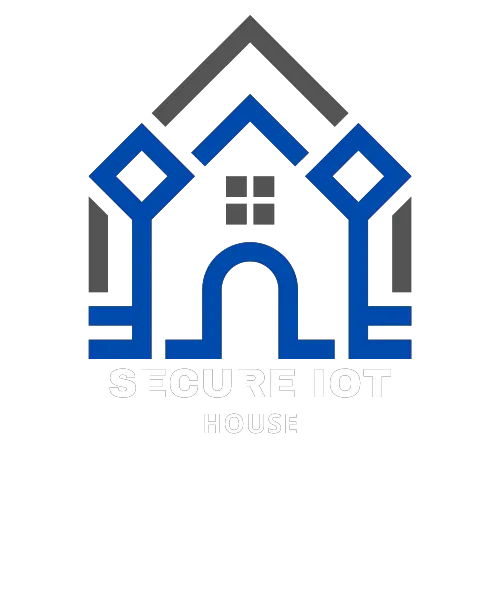When Cities Fall: How Municipal Cyberattacks Threaten Your Smart Office

As smart offices become increasingly integrated with urban infrastructure, the wave of municipal cyberattacks sweeping across America poses an unprecedented threat to business continuity. When your city's digital backbone crumbles, your smart office feels every tremor.
The summer of 2025 has delivered a harsh wake-up call to the smart office community: our businesses are only as secure as the cities that host them. From Nevada's statewide digital paralysis to Minnesota's military-grade cyber emergency, municipal ransomware attacks are creating cascading failures that ripple through commercial districts, business parks, and smart office environments nationwide.
For smart office managers and IT professionals, these aren't distant government problems – they're business continuity nightmares that can cripple operations, disrupt supply chains, and expose corporate vulnerabilities in ways traditional cybersecurity planning never anticipated.

When Municipal Infrastructure Becomes Your Single Point of Failure
Nevada's Statewide Shutdown: A Smart Office Nightmare Scenario
On August 24, 2025, Nevada experienced what cybersecurity experts are calling the first successful ransomware attack against an entire state government. For businesses operating in Nevada, this wasn't just a government inconvenience – it was an operational catastrophe.
Consider the immediate impact on smart offices across Nevada:
Transportation Disruption: With DMV systems offline, employee renewals and vehicle registrations ground to a halt, affecting company fleet operations and employee mobility.
Supply Chain Breakdown: State purchasing systems went dark, disrupting B2B transactions and vendor relationships that many smart offices rely on for everything from office supplies to technology procurement.
Compliance Paralysis: Companies requiring state permits, licenses, or regulatory approvals found themselves in limbo, with critical business processes frozen indefinitely.
Communication Infrastructure: State phone lines experienced intermittent outages, affecting businesses that depend on municipal services or coordinate with local agencies.
The Nevada attack demonstrated a chilling reality: your smart office's sophisticated IoT sensors, cloud-based collaboration tools, and automated building systems become meaningless when the broader urban ecosystem collapses.
St. Paul: When Cities Call in Military Support
Minnesota's deployment of the National Guard cyber unit to combat St. Paul's ransomware attack marked a historic escalation – and sent shockwaves through the local business community. The Interlock ransomware gang's assault on St. Paul created a perfect storm of business disruption:

Utility Dependencies: Smart offices rely heavily on municipal utilities for power, water, and waste management. When city systems are compromised, facility management becomes a manual, inefficient process.
Public Transportation: Companies with employees dependent on public transit faced workforce disruption as city transportation systems struggled with compromised networks.
Emergency Services: Smart office emergency protocols often integrate with city 911 systems. When municipal emergency infrastructure is under attack, corporate crisis management becomes significantly more complex.
Data Interconnectivity: Many smart offices integrate with city data feeds for everything from traffic optimization to environmental monitoring. These connections become vulnerability vectors during municipal cyberattacks.
The Hidden Costs: What Nevada and St. Paul Teach Smart Offices
The financial impact extends far beyond the direct costs of ransomware recovery. For businesses in affected areas:
- Lost Productivity: Employees unable to access city services, navigate compromised traffic systems, or complete routine civic tasks
- Supply Chain Delays: Vendor relationships disrupted when municipal approval processes freeze
- Compliance Risks: Inability to meet regulatory requirements due to offline government systems
- Reputation Damage: Clients and partners lose confidence in businesses located in cyber-compromised cities

The Smart Office Vulnerability Matrix
Why Your Connected Workplace is at Risk
Smart offices pride themselves on connectivity and automation, but these same features create unique vulnerabilities when municipal systems are under attack:
IoT Ecosystem Dependencies: Your smart thermostats, security systems, and occupancy sensors often rely on municipal internet infrastructure and emergency services integration.
Cloud Service Vulnerabilities: Many smart office platforms depend on regional data centers and internet backbones that can be affected by large-scale municipal attacks.
Vendor Network Exposure: Third-party service providers serving your smart office may also service municipal clients, creating potential cross-contamination risks.
Employee Device Security: Remote and hybrid workers connecting to compromised municipal WiFi or using local internet services can introduce malware into corporate networks.
The Cascade Effect: How Municipal Attacks Spread
Recent attacks reveal troubling patterns of how municipal vulnerabilities affect commercial environments:
Shared Infrastructure: Cities and businesses often use the same regional internet service providers, telecommunications infrastructure, and cloud services.
Vendor Crossover: IT companies serving municipal clients often also serve commercial clients, creating potential attack vectors.
Supply Chain Integration: Modern smart offices are deeply integrated with local supply chains that depend on municipal systems for permits, inspections, and logistics coordination.
Employee Lifecycle Management: HR processes that depend on government services (background checks, tax processing, permits) become bottlenecks during municipal cyber incidents.

The Geographic Risk Assessment: Where Smart Offices are Most Vulnerable
High-Risk States for Smart Office Operations
Based on recent attack patterns and financial losses, smart offices should pay particular attention to locations in these states:
California: With over $2.5 billion in cybercrime losses in 2024, the state's high concentration of technology infrastructure makes it a prime target. Smart offices in Silicon Valley and Los Angeles face elevated risks due to the interconnected nature of tech infrastructure.
Texas: $1.3 billion in reported losses, with recent attacks on municipalities like Dallas and Greenville. The state's energy infrastructure vulnerabilities can cascade into commercial power systems that smart offices depend on.
Florida: Over $1 billion in losses, with frequent attacks due to high population density and economic activity. Smart offices in Miami and Tampa face particular risks due to tourism and finance sector integration.
Colorado: The highest cyberattack risk score in the U.S. in 2024, with significant attacks on healthcare and education – sectors that often share infrastructure with commercial districts.

Municipal Attack Patterns: What Smart Offices Need to Watch
Recent attacks reveal concerning trends:
Coordinated Assaults: The 2019 Texas attack on 22 municipalities simultaneously demonstrated how attackers can target multiple jurisdictions, maximizing business disruption.
Critical Infrastructure Focus: Attacks on port systems (Seattle), utility companies, and transportation networks have direct impacts on smart office operations.
Data Exfiltration: Over 650,000 residents' data was compromised in Rhode Island's attack – a reminder that municipal data breaches can expose employee and customer information stored in city systems.
Industry Impact: When Entire Sectors Go Dark
Educational Infrastructure Collapse
The assault on America's educational infrastructure has created unique challenges for smart offices, particularly those in university towns or education-adjacent markets:
Los Angeles Unified School District (2022): 100,000 individuals' data compromised, affecting not just students but also businesses serving the district.
Broward County Public Schools, Florida (2021): The Conti ransomware attack on one of the country's largest school districts disrupted local economic activity and demonstrated how educational attacks cascade into commercial environments.
These attacks highlight how smart offices in education-heavy markets face amplified risks due to infrastructure sharing and workforce dependencies.
Healthcare System Vulnerabilities
Healthcare attacks create particular challenges for smart offices with employee wellness programs, on-site medical facilities, or healthcare clients:
- Medical appointment systems going offline affect employee healthcare access
- Insurance processing delays impact employee benefits administration
- Emergency medical services disruption affects workplace safety protocols
The Smart Office Defense Strategy
Lessons from Municipal Failures
The municipal attack patterns reveal critical insights for smart office cybersecurity:
Backup Redundancy: 78% of attacked governments relied on backups for recovery, but smart offices need multi-layered backup strategies that don't depend on municipal infrastructure.
Incident Response: Cities that activated emergency protocols faster (like Nevada's immediate system isolation) fared better than those that delayed response.
Communication Continuity: Businesses need communication systems that function independently of municipal infrastructure during crisis events.
Vendor Diversification: Relying on local-only service providers creates municipal dependency risks.
Building Municipal Attack Resilience
Smart offices should implement "municipal resilience" strategies:
Infrastructure Independence:
- Redundant internet connections through multiple providers
- Backup power systems that don't rely solely on municipal grids
- Independent water and waste management contingencies
Data Protection:
- Ensure employee and customer data isn't stored in municipal systems
- Regular audits of third-party vendors who may also serve government clients
- Air-gapped backup systems that can't be accessed through municipal network compromises
Operational Continuity:
- Remote work capabilities that don't depend on local infrastructure
- Vendor relationships that extend beyond local municipal boundaries
- Supply chain diversification to reduce dependence on locally-regulated providers
Employee Support:
- Emergency communication systems independent of municipal networks
- Transportation alternatives during municipal service disruptions
- Health and safety protocols that don't rely on city emergency services integration
The Federal Disconnect: When Help Isn't Coming
Shrinking Support Creates Business Risk
The federal government's decision to cut $8.3 million from MS-ISAC – a critical cybersecurity resource for local governments – has direct implications for smart offices. When cities lack adequate cyber defense, businesses suffer collateral damage.
MS-ISAC detected and prevented more than 59,000 malware and ransomware attacks on local governments in 2024. Without this protection, smart offices face:
- Increased frequency of municipal attacks affecting business operations
- Longer recovery times when attacks do occur
- Greater likelihood of cascading failures affecting commercial infrastructure
The CISA Reality
While the Cybersecurity and Infrastructure Security Agency continues to provide support, their resources are stretched thin. Smart offices can't rely on federal agencies to protect the municipal infrastructure their businesses depend on.
Technology Evolution: New Threats, New Vulnerabilities
Summer 2025: The New Attack Landscape
Recent attacks reveal sophisticated techniques that should concern smart office managers:
ToolShell Campaigns: Multiple Microsoft SharePoint vulnerabilities were exploited in widespread attacks targeting organizations across the US. Many smart offices rely on SharePoint for collaboration and document management.
AI-Enhanced Attacks: Ransomware groups are using artificial intelligence to automate campaigns, craft more convincing phishing emails, and identify vulnerabilities more efficiently.
Supply Chain Targeting: Attacks on managed service providers (MSPs) create risks for smart offices that outsource IT services to companies that also serve municipal clients.
The Ransomware-as-a-Service Threat
The rise of RaaS platforms has democratized cybercrime, making attacks more frequent and harder to predict. Groups like LockBit, which accounted for $91 million in ransomware payments in 2025, operate sophisticated affiliate networks that target both government and commercial entities simultaneously.
Economic Impact: The True Cost of Municipal Cyber Weakness
The $50 Billion Problem
Over the past three years, 246 ransomware attacks have struck U.S. government organizations at an estimated cost of $52.88 billion. This isn't just a government problem – it's a business environment crisis that affects:
- Commercial real estate values in cyber-compromised cities
- Insurance premiums for businesses in high-risk municipalities
- Talent recruitment as professionals avoid cyber-vulnerable locations
- Supply chain reliability in regions with weak municipal cyber defenses
Recovery Costs Double Down
The mean cost for governments to recover from ransomware attacks rose to $2.83 million in 2024, more than double the previous year. These costs translate directly into:
- Higher municipal taxes affecting business operating costs
- Reduced city services that businesses depend on
- Infrastructure investment delays that impact commercial development
The Path Forward: Smart Office Resilience in an Unsafe Urban Environment
Building Anti-Fragility
Smart offices must evolve from simply "cyber-secure" to "municipally resilient." This means:
Assumption Planning: Assume your city will be attacked and plan operations accordingly
Redundant Systems: Every critical business function should have alternatives that don't depend on municipal infrastructure
Vendor Vetting: Evaluate service providers based on their municipal client exposure and cross-contamination risks
Geographic Diversification: Consider distributed operations models that reduce dependence on any single municipal environment
The Smart Office Advantage
Paradoxically, smart offices are both more vulnerable and better positioned to handle municipal cyber crises than traditional workplaces:
Advantages:
- Cloud-based systems can operate independently of local infrastructure
- IoT sensors can provide early warning of infrastructure problems
- Automation can maintain basic operations during manual municipal processes
- Remote work capabilities reduce dependence on local services
Vulnerabilities:
- Higher integration with municipal data feeds creates more attack vectors
- Greater dependence on stable internet and power infrastructure
- More complex vendor ecosystems with municipal crossover risks
Conclusion: Thriving in the New Threat Landscape
The cyber siege against America's cities isn't slowing down. U.S. ransomware attacks increased by 149% year over year in the first five weeks of 2025, with municipal targets remaining a primary focus for cybercriminals.
For smart office managers and business leaders, this reality demands a fundamental shift in thinking. Cybersecurity is no longer just about protecting your own networks – it's about building resilience against the failure of the urban infrastructure your business depends on.
The cities that will attract and retain smart office tenants are those that invest seriously in cybersecurity infrastructure. Similarly, the smart offices that will thrive are those that plan for municipal cyber failures as a normal part of business continuity planning.
The question isn't whether your city will be attacked – it's whether your smart office will be ready when it happens. In an era where municipal cyber weakness has become a business risk factor, the most successful smart offices will be those that achieve true operational independence while maintaining the connected advantages that define the modern workplace.
The cyber siege is here, and your smart office is on the front lines. The time to build your defenses is now.
In the interconnected world of smart offices and urban infrastructure, no business is an island – but the wisest ones are building bridges to safety before the next wave hits.










